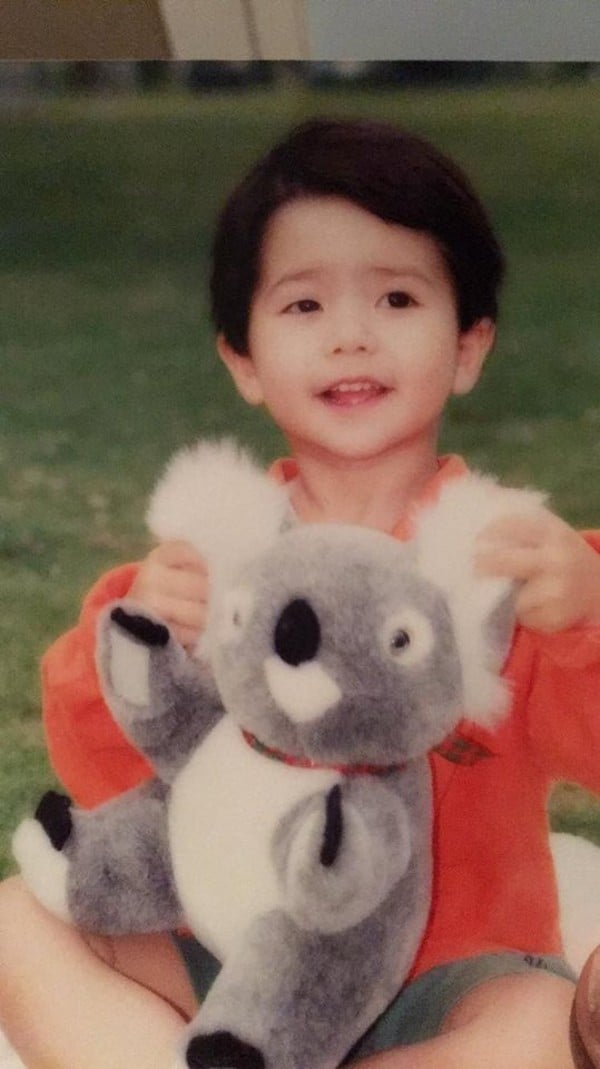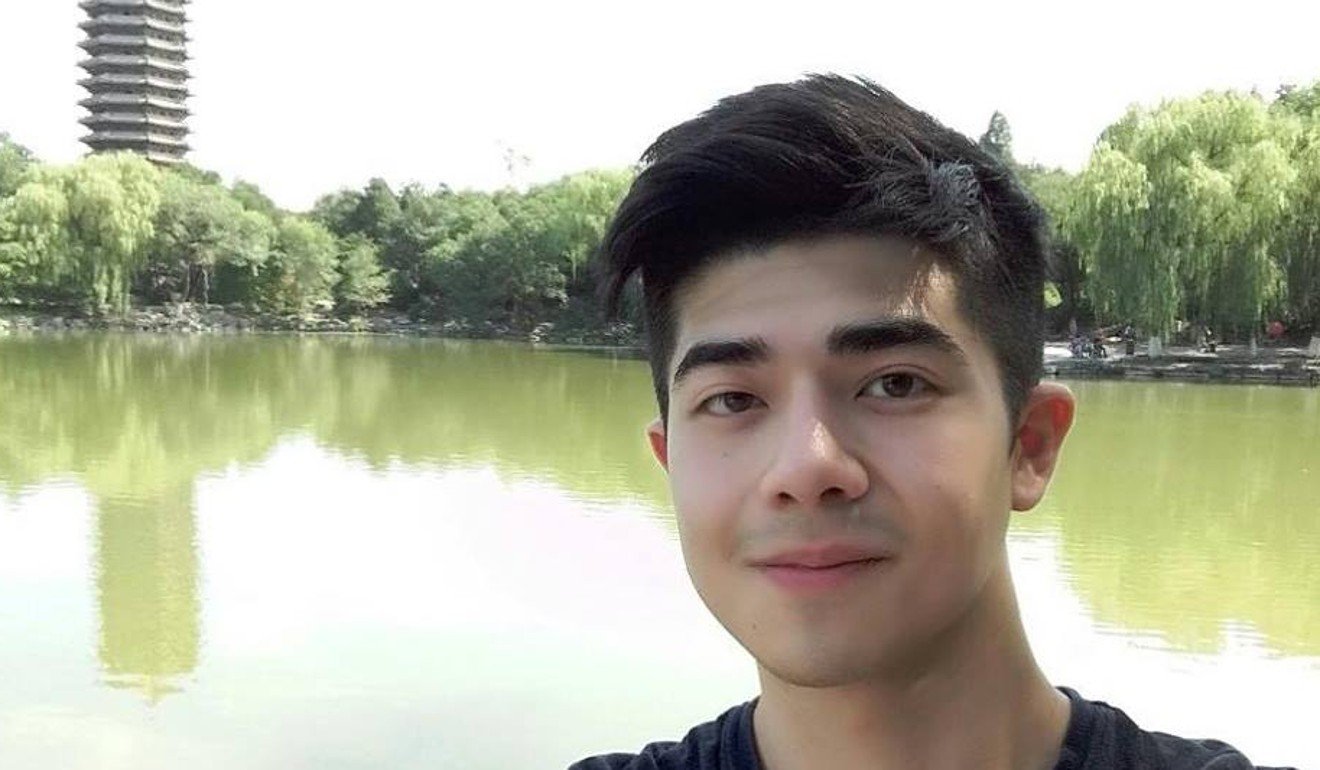
How young Chinese-Americans are embracing their identity
For many biracial children growing up in the US, it can be a struggle to fit in – but as adults they are connecting cultures

Growing up as a Chinese-American in suburban Chicago, Eric Stinehart remembers vividly the fear and confusion he felt as a six-year-old, standing in a soccer field at school as his classmates split themselves into teams by race.
Did he belong to the American team, or the Asian one? He wasn’t sure, but his friends decisively assigned him to the team full of Asian faces.
“Partly because of my appearance, I was mostly considered just Asian,” said the 19-year-old student, whose father is from Iowa and mother is from Shanghai. “In elementary school [when] the teams would split up by race, that was very upsetting for me.”

Yet when Stinehart, who is studying public policy at Princeton University, travelled to China to visit his mother’s relatives each summer, it was a vastly different experience.
“In America, people mostly assume that I’m only Chinese and a lot of them think I’m these classic Chinese stereotypes, like being smart. Interestingly, when I’m in China or Asia, people think I can’t speak Chinese because I’m mixed,” he said.
“It’s really quite different. I definitely feel like a minority in America and I’ve been discriminated against. But in China, more people can tell that I’m mixed instead of full Asian. I’d get stares on the subway, people would notice that I dress more like an American, and they see me as a ‘beautiful half-Asian’.”
As a child, this difference in treatment when Stinehart was in the United States or China left him uncertain about his mixed identity. Although he spoke fluent Putonghua, ate Chinese food at home and regularly travelled to China, it wasn’t until his teenage years that he began to accept his Chinese roots.
“In many ways, culturally, I’m a lot more Chinese than many half-Asians. [But] I didn’t feel completely comfortable identifying with it until high school,” he said.
Stinehart’s experience is not uncommon among biracial people growing up in America, even as the number of interracial marriages in the US has risen steadily over the years. Asian-Caucasian unions accounted for 15 per cent of all such marriages in 2015, the second most common after Hispanic-Caucasian marriages at 42 per cent, according to a recent Pew Research Centre report. Exact numbers were not available.
“Biracial people tend to face higher levels of social exclusion … because they are never ‘Asian enough’ or ‘white enough’ to fit into their respective racial groups,” said Sarah Gaither, a professor of psychology and neuroscience at Duke University in the US, whose research focuses on interracial identities and relations.
“It is this lack of belonging and the constant questioning that many biracial people face that can often lead to negative self-esteem. We all want to belong to a group, but for biracials who are straddling multiple racial groups simultaneously, this issue of belonging is often questioned by others.”
These attitudes were recently exposed by Chinese-American actress Chloe Bennet, who says she changed her surname from Wang to get cast in Hollywood.
“Changing my last name doesn’t change the fact that my blood is half-Chinese, that I lived in China, speak Mandarin, or that I was culturally raised both American and Chinese,” the star of Marvel’s Agents of S.H.I.E.L.D. wrote in a response to a follower on Instagram.
‘Ethnic chameleons’
Many biracial young adults have learnt to cope with and even embrace their ethnic ambiguity. And in doing so, many Chinese-Americans have managed to find a place for themselves in an increasingly globalised – albeit polarised – world.
Taiwanese-American Kevin Metters enjoys being an “ethnic chameleon”, as he puts it. The 23-year-old New York native whose father, from Brooklyn, met his Taiwanese mother when she was studying in the US, says he has previously been mistaken for being fully Asian, an Italian and even Uygur.
“I enjoy being an ethnic chameleon, shifting between groups. It lets me learn more about people’s perceptions of me,” he said. “I probably did encounter racial discrimination at some point, but it hasn’t made a big impression.”

Metters considers himself more in touch with his Chinese heritage than the average American-born Chinese because he visits his mother’s relatives in Taiwan every summer. The City University of New York graduate in political science and Chinese also spent a year on exchange at Peking University in Beijing in 2015 and 2016, and will start his master’s in international public policy at Fudan University in Shanghai this month.
“I was brought up speaking Chinese and English. I don’t view myself as more Chinese but cohesively Eurasian. These are just different aspects of my background and heritage, and I value having that sort of diversity,” he said.
Twenty-three-year-old Rachel Chang, who has Chinese and Jewish heritage, agreed.
“I do like being biracial. There’s just so much opportunity to have a connection to so much more. I love the Jewish aspect of my family and there’s deep culture in the Chinese side of my family too,” she said.
Chang’s father is a second-generation Chinese whose family moved to Hawaii from China’s southern Guangdong province before he was born. He and Chang’s mother were neighbours when they met. Now the family of four, including a younger sister, lives just outside Washington.
Advantages
As China expands its international influence while America’s dominance wanes, young Chinese-Americans – rather than struggling to fit in – are reaping the benefits of their backgrounds.
“There are more advantages than disadvantages to being of mixed-race,” Metters said. “It’s definitely become more popular to engage in Asian culture for Americans with Asian heritage. I find it an enriching part of my life. I can’t imagine not being like this – just living in New York like a regular American but also being able to go to Taiwan and mainland China and interact with people in Mandarin.”
Chang doesn’t speak the language, but she said her younger sister’s skills had impressed when she visited China.
“My sister, who studies Mandarin, said people in China were very surprised when she was able to speak to them. Most had assumed she was white. But once they heard her speak, they were more receptive to her,” she said.
Although Stinehart experienced racial discrimination as a child, he now sees advantages in his biracial identity.
“I love how just being exposed to a whole different culture and knowing Chinese gives me access to so many more billions of people in the world. It’s cool to be connected to both [Chinese and Western] cultures,” he said.

Metters agreed: “When I went to mainland China for the first time in 2010, it was alien to me but I felt very in tune with Chinese culture in general … I’d say Chinese people like us more because we’re half Asian – maybe because we’re foreign but also familiar.
“It’s a very exciting time to be in China. I find it dynamic and a fascinating place to watch history being made … Going to Fudan and Peking University allows me to come into contact with some of the smartest of China’s new generation and be plugged in to what is to come.”
Diversity in China
Their positive experiences in China are in part due to the country’s lack of exposure to foreign cultures, according to Dr James Leibold, an associate professor at La Trobe University in Melbourne, Australia.
But the academic, who specialises in the politics of race and ethnicity in Chinese society, points out that not all biracial people get such positive treatment on the mainland.
“People in mainland China with different skin and hair types … are sometimes fetishised in a positive manner, but can also be discriminated against in very demeaning ways,” Leibold said. “In particular, Chinese-African children who are fluent in Chinese and have lived in China their entire lives are treated like circus acts.”
Leibold cited the example of Lou Jing, a Chinese-African woman born and bred in Shanghai who was one of the finalists in a Chinese singing competition in 2009. The exposure she received drew a flurry of vicious racist remarks on Chinese social media platforms.
“There’s still a strong sense of hierarchy that underpins how China sees diversity in the world,” he said.
In China, interracial marriages are so uncommon that definitive figures are not available. A Ministry of Civil Affairs report last month showed there were 42,000 marriages registered between Chinese and foreign nationals last year, but the number included overseas Chinese as well as spouses from Hong Kong, Macau and Taiwan.
That was a mere 0.36 per cent of the national total of 11.4 million marriages in 2016.
There are also no official statistics on the number of biracial children because “mixed race” is not recognised in the government’s list of ethnic classifications.
“Mixed marriages are a wonderful outcome of globalisation,” Leibold said. “While China talks about wanting to be at the forefront of globalisation now – particularly in the post-Trump US – it still has a long way to go to be comfortable dealing with people from other countries and of other races on an equal basis. Hopefully, if China continues to grow and open up, it will become more accepting of diversity.”
Bridging the gap
So could young Chinese-Americans seeking to connect with their Chinese roots help bridge the gap?
There are two schools of thought on this, according to Duke University’s Gaither.
“One view is that multiracial people will create more groups and stratify our societies further,” she said. “Another view is that biracial people may actually bring groups together by reducing the distance seen between them … If you can highlight an important identity in common with someone else, it can make that social interaction much more positive.”
Metters believes that young Chinese-Americans can add to, and even reshape, the idea of what it means to be Chinese.
“To me, culture is always evolving. What is Chinese? You have Chinese people from China, Chinese-Americans and the Chinese diaspora who have been spread across the globe for hundreds of years,” he said. “I feel like biracial people are a preview of what’s to come in this coming generation.”